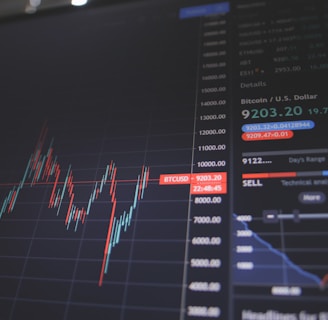Mastering Technical Analysis: A Trader’s Guide to Market Timing and Profitability


Introduction
In the dynamic world of trading and investing, understanding market movements is crucial. Technical analysis serves as a powerful tool that enables traders to interpret price actions and make informed decisions. By analyzing historical price data and market statistics, traders can identify patterns and trends that may indicate future price movements. This guide delves into the fundamentals of technical analysis, its key components, and how traders can apply these concepts to enhance their trading strategies.
What is Technical Analysis?
Technical analysis is the study of past market data, primarily price and volume, to forecast future price movements. Unlike fundamental analysis, which evaluates a security’s intrinsic value based on financial statements and economic indicators, technical analysis focuses on identifying patterns and trends that suggest future activity. The core belief is that all known information is already reflected in the price, and by studying price movements, traders can gain insights into market sentiment and potential future behavior.
Key Principles of Technical Analysis
1. Market Discounts Everything
Technical analysts believe that all factors influencing a security—economic, political, psychological—are already incorporated into its current price. Therefore, analyzing price movements is sufficient to understand market dynamics.
2. Price Moves in Trends
Markets tend to move in identifiable trends, which can be upward (bullish), downward (bearish), or sideways (range-bound). Recognizing these trends early allows traders to align their strategies accordingly.
3. History Tends to Repeat Itself
Market patterns and behaviors often repeat over time due to consistent human psychology. By studying historical patterns, traders can anticipate future movements.
Essential Tools and Concepts in Technical Analysis
1. Charts
Charts are the foundation of technical analysis, providing visual representations of price movements over time. Common chart types include:
Line Charts: Connect closing prices over a period, offering a clear view of the overall trend.
Bar Charts: Display the open, high, low, and close prices for each period, providing more detailed information.
Candlestick Charts: Similar to bar charts but with a more visual representation, highlighting bullish and bearish periods effectively.
2. Support and Resistance Levels
Support levels are price points where a downtrend is expected to pause due to a demand concentration. Resistance levels are where an uptrend is likely to stall due to a concentration of supply. Identifying these levels helps traders make entry and exit decisions.
3. Trend Lines and Channels
Trend lines are straight lines drawn on a chart to connect successive highs or lows, indicating the direction of the trend. Channels are formed by drawing parallel lines above and below the trend line, outlining potential support and resistance zones.
4. Moving Averages
Moving averages smooth out price data to identify trends over specific periods. Common types include:
Simple Moving Average (SMA): Calculates the average price over several periods.
Exponential Moving Average (EMA): Gives more weight to recent prices, making it more responsive to new information.
Moving averages help in identifying trend directions and potential reversal points.
5. Indicators and Oscillators
These are mathematical calculations based on price and volume, providing insights into market momentum and potential overbought or oversold conditions. Key indicators include:
Relative Strength Index (RSI): Measures the speed and change of price movements, indicating overbought or oversold conditions.
Moving Average Convergence Divergence (MACD): Shows the relationship between two moving averages, helping identify potential buy or sell signals.
Stochastic Oscillator: Compares a particular closing price to a range of its prices over a certain period, indicating momentum.
Applying Technical Analysis in Trading
1. Identifying Trends
By analyzing charts and indicators, traders can determine the current market trend and align their trades accordingly. For instance, in an uptrend, traders might look for buying opportunities, while in a downtrend, they might consider selling or shorting.
2. Entry and Exit Points
Technical analysis helps in pinpointing optimal entry and exit points. For example, a trader might enter a trade when the price breaks above a resistance level or when an indicator signals a bullish crossover.
3. Risk Management
Setting stop-loss and take-profit levels based on support and resistance zones or volatility measures ensures that traders manage their risk effectively.
Advantages of Technical Analysis
Timeliness: Provides real-time insights, allowing for prompt decision-making.
Versatility: Applicable across various markets, including stocks, forex, commodities, and cryptocurrencies.
Quantitative Approach: Relies on data and statistical measures, reducing emotional biases.
Limitations of Technical Analysis
Subjectivity: Interpretation of patterns can vary among traders.
Lagging Indicators: Some indicators may provide signals after the price movement has occurred.
False Signals: Market noise can lead to misleading patterns or signals.
Combining Technical and Fundamental Analysis
While technical analysis focuses on price movements, combining it with fundamental analysis, which evaluates a security’s intrinsic value, can provide a more comprehensive view. This integrated approach allows traders to understand both the ‘why’ and ‘when’ of market movements.
Conclusion
Technical analysis is an essential tool for traders aiming to navigate the complexities of financial markets. By mastering chart patterns, indicators, and market psychology, traders can enhance their decision-making processes and improve their chances of success. However, it’s crucial to remain aware of its limitations and consider combining it with other analytical methods for a well-rounded trading strategy.


